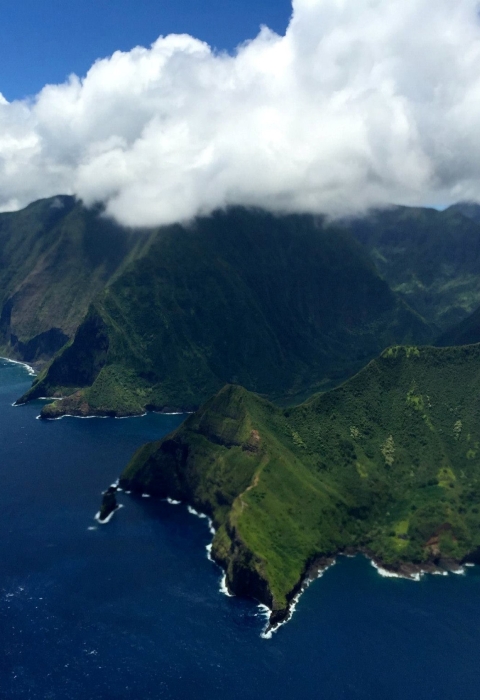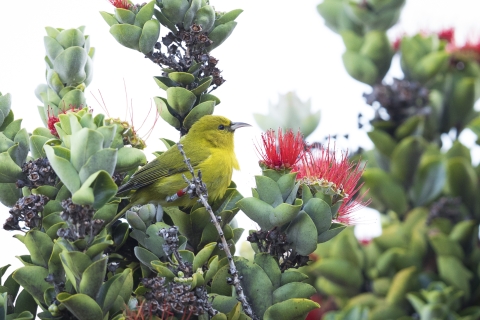Wildlife extinction is one of conservation’s toughest problems. And in the Hawaiian Islands, the problem is especially severe. Currently, there are over 200 species of endemic plants and animals that are at risk of extinction across the Hawaiian Islands of “Maui Nui” which includes the islands of Maui, Moloka’i and Lāna’i. The Maui Landscape Conservation Design is a decision-support framework co-designed by the U.S. Fish and Wildlife Service, the State of Hawai’i, the U.S. Geological Survey, university researchers, field experts and crew members to help wildlife managers create comprehensive and cost-effective management plans at landscape scales.
Stepping away from the norm of doing conservation on a species-by-species basis, the Maui Landscape Conservation Design allows wildlife managers to integrate multiple species, populations, and locations into their conservation planning efforts. The framework leads users through a series of steps where they first identify the species at risk of extinction, then use existing species and habitat information and spatial modeling to determine the most effective conservation sites, priority actions, and monitoring and adaptation efforts needed to best conserve those species across the landscape. Though the framework is still in development, it is set to incorporate all 200 species by sometime in 2022.
The U.S. Fish and Wildlife Service Science Applications Program is proud to support the Maui Landscape Conservation Design by providing group facilitation, key technical inputs, and funding.
Background and History:
Maui Nui (“Great Maui”) has been a single island for much of the last million years, only becoming the separate islands of Maui, Moloka’i, Lāna’i and Kaho’olawe during interglacial periods when sea levels rose and lowlands became submerged. Many unique species evolved here, isolated from the other Hawaiian Islands and far from continents. But, the arrival of humans, invasive species invasive species
An invasive species is any plant or animal that has spread or been introduced into a new area where they are, or could, cause harm to the environment, economy, or human, animal, or plant health. Their unwelcome presence can destroy ecosystems and cost millions of dollars.
Learn more about invasive species , and climate change climate change
Climate change includes both global warming driven by human-induced emissions of greenhouse gases and the resulting large-scale shifts in weather patterns. Though there have been previous periods of climatic change, since the mid-20th century humans have had an unprecedented impact on Earth's climate system and caused change on a global scale.
Learn more about climate change transformed the landscape and confined many species to tiny parts of their former range, where some now teeter on the edge of extinction.
With effective management methods, wildlife managers knew that most species in danger of extinction could expand their populations and move towards recovery. But, when district manager for Hawai’i’s Division of Forestry and Wildlife, Dr. Scott Fretz, began working to manage these species across Maui Nui, he was faced with limited field crews, limited resources, and a whole lot of questions. Where should his team concentrate their efforts, on which species, and doing what actions? How best could he make those decisions objectively, while considering the effects of climate change? With so much complexity, it was clear a new, transparent and defensible decision-making framework was needed to help wildlife managers address the problem of extinction in the Islands. And so, the Maui Landscape Conservation Design was born.



